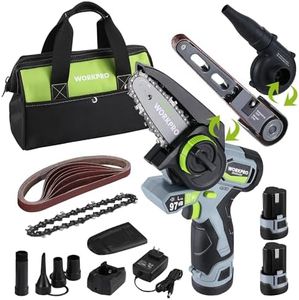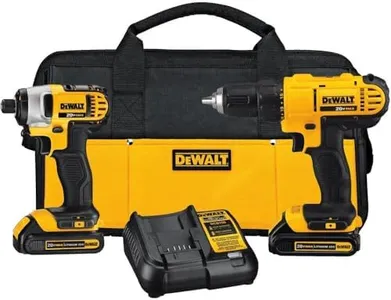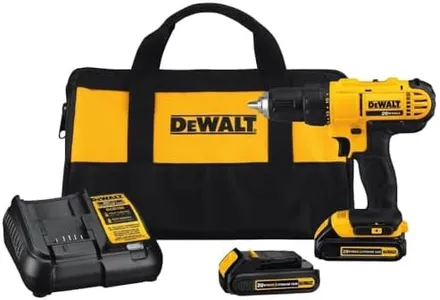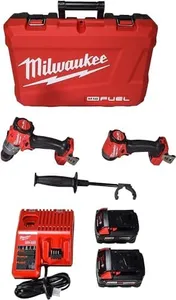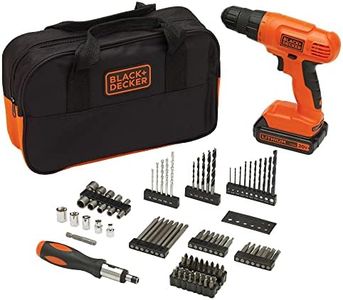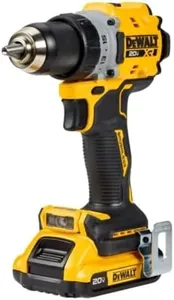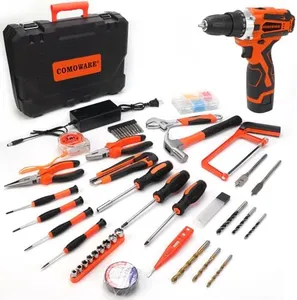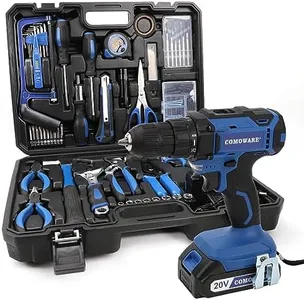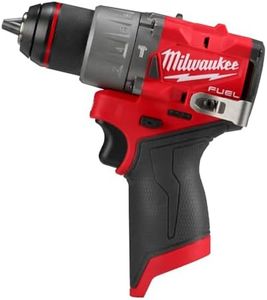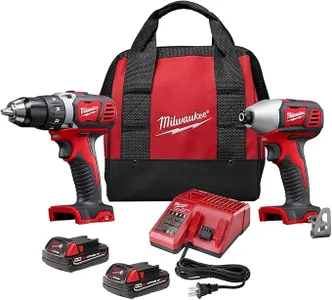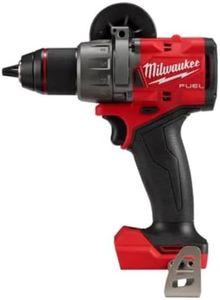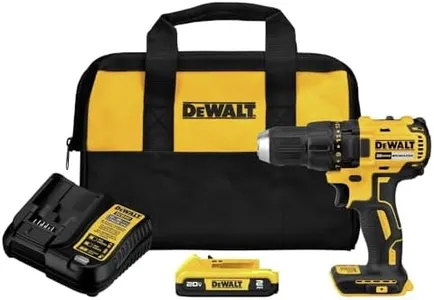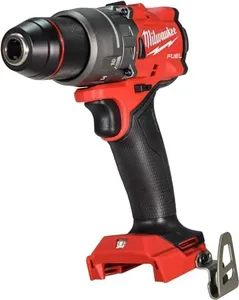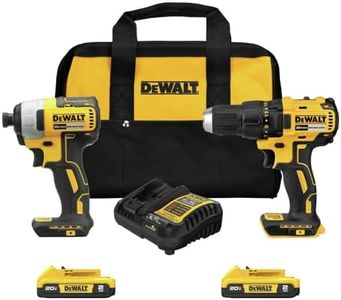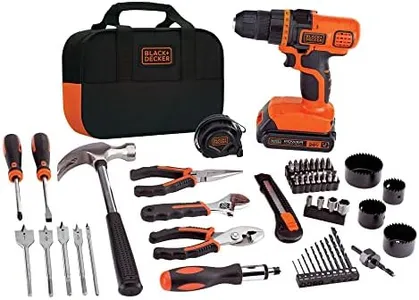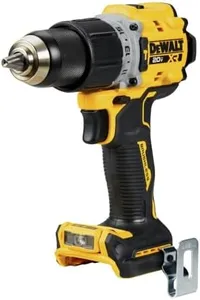10 Best Drills 2025 in the United States
Our technology thoroughly searches through the online shopping world, reviewing hundreds of sites. We then process and analyze this information, updating in real-time to bring you the latest top-rated products. This way, you always get the best and most current options available.

Our Top Picks
Winner
DEWALT 20V MAX Cordless Drill and Impact Driver, Power Tool Combo Kit with 2 Batteries and Charger (DCK240C2)
Most important from
53271 reviews
The DEWALT 20V MAX Cordless Drill and Impact Driver Combo Kit (DCK240C2) is a popular choice for both professionals and DIY enthusiasts, given its strong performance and versatility. This kit includes a cordless drill (DCD771) and an impact driver (DCF885), both powered by 20V lithium-ion batteries. The cordless drill features a two-speed transmission (0-450 / 0-1500 RPM) and a high-performance motor delivering 300 unit watts out (UWO), making it suitable for a variety of tasks. The 1/2-inch single sleeve ratcheting chuck ensures a secure grip on bits, and its compact, lightweight design enhances maneuverability in tight spaces. The ergonomic handle further adds to user comfort and control during extended use.
The impact driver is also compact (5.55 inches front to back) and lightweight (2.8 lbs), making it easy to handle. It features a one-handed loading 1/4-inch hex chuck and a three-LED light ring that provides good visibility with a 20-second delay, which is helpful in dimly lit areas. The kit includes two lithium-ion batteries and a charger, ensuring adequate battery life and quick charging times for continuous work. However, some users might find the charger a bit slow compared to other models on the market. Additionally, while the tools are lightweight and easy to handle, the total weight of the kit is around 8.73 pounds, which might be cumbersome for prolonged transport.
A three-year limited warranty adds a layer of confidence in the product's durability. Given its powerful performance, ergonomic design, and additional features, this drill and impact driver combo kit is a solid choice for those who need reliable and efficient power tools for a range of applications.
Most important from
53271 reviews
DEWALT 20V Max Cordless Drill/Driver Kit, 2 Batteries and Charger Included (DCD771C2)
Most important from
49258 reviews
The DEWALT 20V Max Cordless Drill/Driver Kit is a versatile tool that is great for both DIY enthusiasts and professionals. One of its standout features is its compact and lightweight design, making it easy to maneuver in tight spaces. With a powerful motor delivering 300 unit watts out (UWO), it can handle a wide range of drilling and fastening tasks effectively. The high-speed transmission offers two speeds, allowing you to choose between lower torque for precision tasks or higher speed for more demanding jobs. The 1/2-inch ratcheting chuck ensures a secure grip on your drill bits, which is essential for both safety and efficiency.
In terms of ergonomics, the handle is designed for comfort, reducing fatigue during extended use. The kit comes with two lithium-ion batteries, which provide decent battery life and quick charging, so you won't have to wait long to get back to work. Weighing just 3.64 pounds, it's easy to use for prolonged periods without straining your wrist or arms.
The drill performs well for general tasks, but there are some limitations. The maximum torque of 650 inch-pounds might not be sufficient for more heavy-duty applications. Additionally, the chuck size is limited to 0.5 inches, which may restrict the types of bits you can use. Some users may also find that the battery life could be extended, especially with more extensive projects. Despite these drawbacks, the DEWALT 20V Max drill remains a reliable choice for those seeking a solid cordless drill for everyday tasks. Whether you are hanging pictures, assembling furniture, or tackling home improvement projects, this drill is a practical option that balances power, portability, and ease of use.
Most important from
49258 reviews
Milwaukee 3697-22 18V Lithium-Ion Brushless Cordless Hammer Drill and Impact Driver Combo Kit (2-Tool) with (2) 5.0Ah Batteries, Charger & Tool Case
Most important from
534 reviews
The Milwaukee 3697-22 18V Lithium-Ion Brushless Cordless Hammer Drill and Impact Driver Combo Kit is a solid choice for anyone looking for durable, high-performance tools. Its brushless motor stands out, offering powerful performance for a wide range of tasks, making it suitable for both DIY enthusiasts and professionals. The kit includes two 5.0Ah lithium-ion batteries that ensure longer battery life, allowing you to work without frequent interruptions for charging. The fast drilling and driving speeds are impressive, particularly under load, which is a significant advantage for demanding projects.
One of the highlights is the mechanical clutch that provides consistent driving across various fasteners, adding to the tool's versatility. The kit's weight at 16.02 pounds may feel hefty for some users, but it also reflects its solid construction, which can enhance stability during use.
This kit does have some drawbacks. Beginners might find the learning curve a bit steep due to its advanced features. Additionally, the weight could be cumbersome for extended use, particularly if you're working overhead or in tight spaces. While it ranks well in the market, some users have pointed out that it might be pricier compared to other options, which could be a consideration for budget-conscious buyers.
This combo kit is excellent for those who need robust, reliable tools that can tackle a variety of projects efficiently. It’s particularly beneficial for professionals and serious DIYers, though lighter alternatives might be better for casual users or those handling lighter tasks.
Most important from
534 reviews
Buying Guide for the Best Drills
When it comes to buying a drill, it's important to consider what you'll be using it for. Drills come in various types and with different features, so understanding your needs will help you make the best choice. Whether you're a DIY enthusiast or a professional, the right drill can make your projects easier and more efficient. Here are some key specifications to consider when choosing a drill.FAQ
Most Popular Categories Right Now
